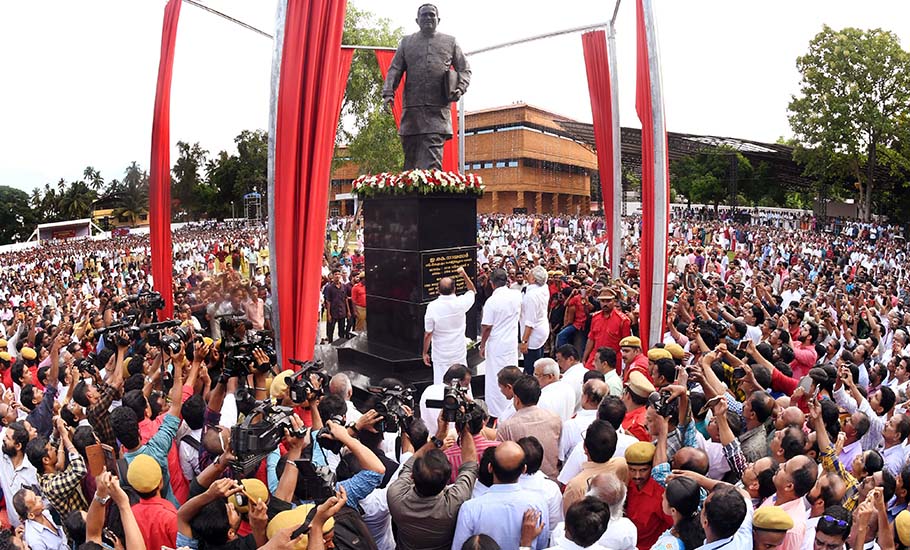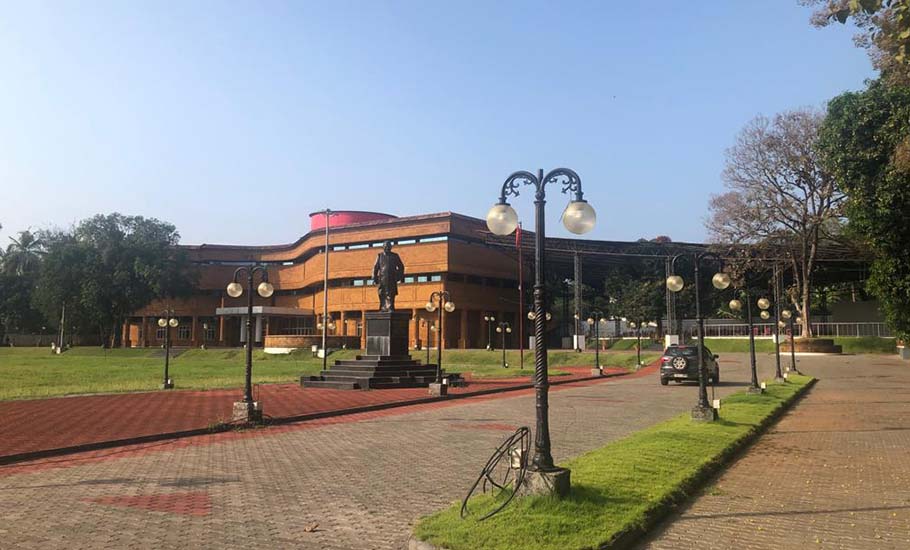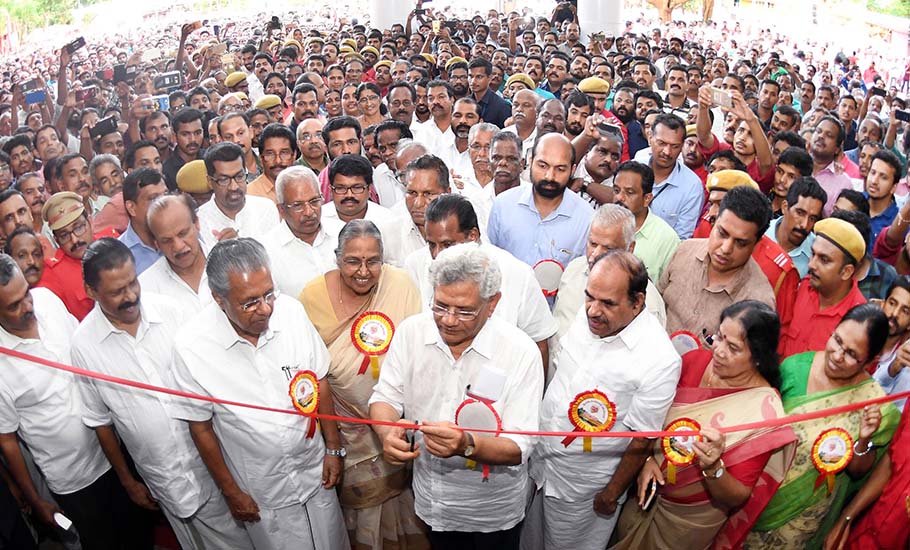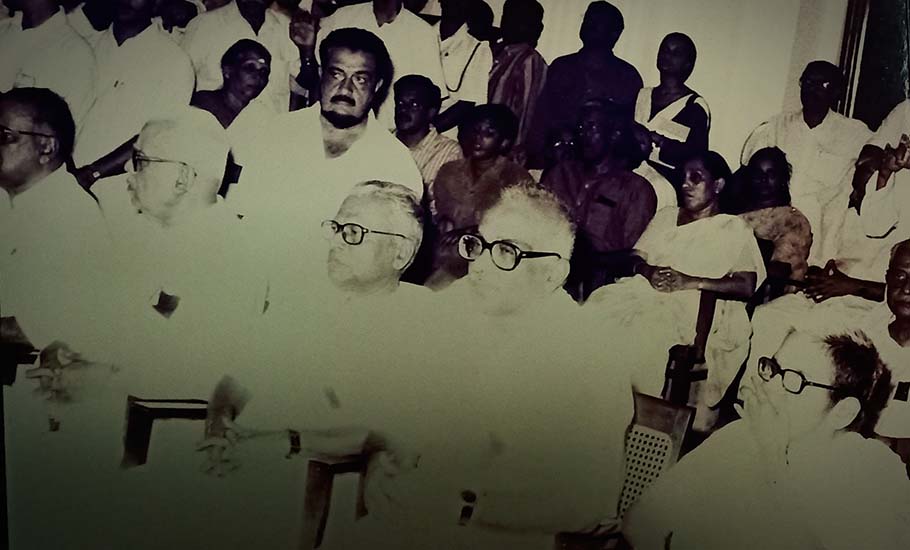
- Home
- News
- Analysis
- States
- Perspective
- Videos
- Education
- Entertainment
- Elections
- World Cup 2023
- Features
- Health
- Budget 2024-25
- Business
- Series
- NEET TANGLE
- Economy Series
- Earth Day
- Kashmir’s Frozen Turbulence
- India@75
- The legend of Ramjanmabhoomi
- Liberalisation@30
- How to tame a dragon
- Celebrating biodiversity
- Farm Matters
- 50 days of solitude
- Bringing Migrants Home
- Budget 2020
- Jharkhand Votes
- The Federal Investigates
- The Federal Impact
- Vanishing Sand
- Gandhi @ 150
- Andhra Today
- Field report
- Operation Gulmarg
- Pandemic @1 Mn in India
- The Federal Year-End
- The Zero Year
- Premium
- Science
- Brand studio
- Home
- NewsNews
- Analysis
- StatesStates
- PerspectivePerspective
- VideosVideos
- Entertainment
- ElectionsElections
- Sports
- Loading...
Sports - Features
- Budget 2024-25
- BusinessBusiness
- Premium
- Loading...
Premium

Kerala’s ‘lal salaam’ to communist history through a museum

A couple of months ago, communist leader EK Nayanar’s son handed over an old Philips pocket radio used by his late father to CPI(M) politburo member Kodiyeri Balakrishnan. At a function held at the AKG Centre in Thiruvananthapuram, Krishna Kumar also handed over some diaries maintained by his father as part of the material collection drive organised to set up a museum at the EK Nayanar...
A couple of months ago, communist leader EK Nayanar’s son handed over an old Philips pocket radio used by his late father to CPI(M) politburo member Kodiyeri Balakrishnan. At a function held at the AKG Centre in Thiruvananthapuram, Krishna Kumar also handed over some diaries maintained by his father as part of the material collection drive organised to set up a museum at the EK Nayanar Memorial Academy Complex in Kannur.
As the work on the museum progresses, museologist Vinod Daniel, who is designing the project, says, “It is going to be one of its kind in the country.”
The museum on the first and second floors of the complex has three sections. “One is exclusively for the history of the Communist Party and its struggles since the 1920s. The second section will have the portraits of leaders and materials like old notices, banners and party flags. The third section will be dedicated to EK Nayanar. It will display his works and contributions to the party,” says Vinod Daniel, who is also a board member of the International Council of Museums (ICOM).
A ‘Martyrs’ Wall’ with the names of people who laid down their lives during the struggles of the Communist Party in Kerala will be the centre of attraction. Speaking on the challenges of setting up a museum without losing even a single episode in the history of the Communist Party, Daniel says, “We are in the process of making a ‘People’s Museum’.

The material collection drive is on. If anybody has any material related to EK Nayanar or the Communist Party, they can hand it over to the EK Nayanar Memorial Academy Complex in Kannur.” The work of the museum is expected to be completed before the next CPI (M) party congress scheduled to be held in Kannur in April 2022.
Salute to communism
It was on May 19, 2018, that CPI(M) general secretary Sitaram Yechury inaugurated the EK Nayanar Memorial Academy Complex in Burnassery in Kannur—a hotbed for communism in Kerala and also the birthplace of EK Nayanar. The academy complex has an open air auditorium with seating for 1,200 people, conference hall, seminar hall, dining hall and a library. A state-of-the-art museum focusing on the role played by the late communist leaders and the history of the Communist Party since 1920 was also finalised during the event.

It was in 2005, a year after the demise of EK Nayanar, that the CPI(M) decided to construct a memorial for the great leader. The party had collected Rs 6.25 crore for the project and bought land at Burnassery near the famous Payyambalam Beach in Kannur for constructing the memorial. But the project got delayed due to various reasons.
However, a fund collection drive organised by the CPI(M) in 2017 evoked tremendous response across the 14 districts of Kerala. The party mobilised Rs 20.84 crore through its ‘bucket collection’ drive for the memorial on August 19, 2017. The opposition parties, however, criticised the CPI(M), saying that the money was “ill-gotten”. But the CPI(M) responded to the allegations by disclosing the details of the account of the party-sponsored Nayanar Memorial Trust through which the transactions were made by two nationalised banks.
As the CPI(M)-led LDF government retained power in the 2021 assembly elections, the party decided to go ahead with the pending works at the EK Nayanar Memorial Academy Complex.
The 20,000 square feet museum, according to Daniel, will exhibit through various materials the political transformation that Kerala has witnessed since the 1920s. “We will be displaying through various materials the factors that paved the way for the growth of the communist movement in Kerala. The materials will also shed light on the history and growth of reformist and revolutionary movements in the state,” he says.
While Daniel oversees the design part of the museum, filmmaker Shanker Ramakrishnan takes care of its creative aspect. Bengaluru-based Magictail, a company co-founded by Vinod Menon and Shanker Ramakrishnan, works on the creative aspects of the museum with more than 30 artists and visualisers.
Kerala is the only state in the country where the communist party is in power today. Even though many political analysts apprehended an anti-incumbency factor during the 2021 assembly elections, the CPI(M)-led Left Democratic Front retained power in the state by securing a landslide victory over the UDF.
So, why is communism so deep-rooted in the cultural and social space of people here?
The credit goes to various struggles that the communist party waged since it was launched in Kerala after a group of disgruntled members of the Kerala Provincial Congress Committee secretly met at Parapram near Thalassery in December 1939. “The museum will have a reenactment of the historic meeting at the enclave in Parapram in 1939 where the Communist Party of India (CPI) was born in Kerala. It will also have space for struggles such as Kayyur, Karivallur, Morazha and Punnpra-Vayalar uprising. There will be a 28-foot-tall symbolic sculpture, representing the marginalised and the sidelined in society,” says Daniel.
Even though a communist government, led by EMS Namboodiripad, was elected through ballot in the first time in 1957 in Kerala, it was dismissed and President’s Rule was imposed in 1959, following an anti-communist liberation struggle. Ideological differences, particularly between the two communist countries like China and the Soviet Union, had an impact on the members of the CPI as well. As a result, a group of leaders in the party left it and formed the CPI(M) in 1964.
EK Nayanar’s legacy
Born in a family of freedom fighters, EK Nayanar joined the Balasangam, the children’s wing of the Communist Party of India in 1938.
He was the first president of the wing. Nayanar joined the CPI in 1939. “His participation in the anti-imperialist movement began in North Malabar. He was jailed for the first time in 1940. He went underground after participating in the Morazha and Kayyur struggles which were part of the peasant uprising in Malabar. Altogether in his revolutionary career, he spent 11 years underground and four years in jail,” says the condolence resolution issued by the Politburo of the CPI(M) following the demise of EK Nayanar on May 19, 2004.

For Nayanar, the ideas and principles of Karl Marx and Vladimir Lenin were tools to destroy the imperialist forces and other establishments. He was one of the 32 National Council members who left the CPI to form the CPI(M) in 1964. He was elected to the Politburo in 1992. As secretary of the state committee of the CPI(M), Nayanar played a significant role in strengthening the base of the party in Kerala. Nayanar was elected to the Kerala assembly six times. He was a three-time Chief Minister of Kerala (1980-1981, 1987-1991 and 1996-2001), making a record of being the longest-serving Chief Minister in Kerala for 11 years.
As a politician, Nayanar never compromised on his ideology. He was a man of simplicity and dealt even with serious issues using his hallmark sense of humour.

“This is a museum being made by the CPI(M). The visitors will mostly be party sympathisers, faithfuls, cadres who follow the ideology. But there is something we should keep in mind – a museum should cater to the audience. So, there will be space for everyone,” says Daniel, who has worked for more than 20 years with the Australian Museum (Sydney) and the J Paul Getty Trust (Los Angeles) in collection-related roles. He has worked on museums in more than 50 countries, including India, and visited more than 900 museums in 55 countries across the world.
Will Nayanar’s museum enjoy the same popularity he did as a communist leader? Only time can answer the question.

